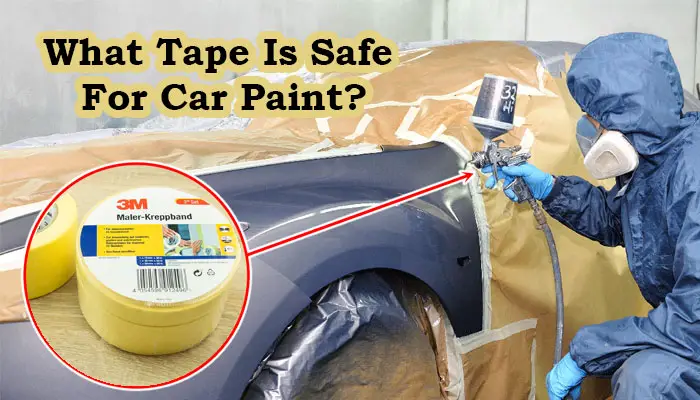What happens if I lost safety deposit box key?
- By Infoik
- 11 Oct, 2021

Lost Safety Deposit Box Key
A physical safe deposit box is a relic of the past, but don’t be too quick to dismiss its importance. You can keep prized possessions in your bank’s vault that are important for you and those who inherit them, such as baseball cards or jewelry inherited from relatives. A secure place also protects critical documents like birth certificates, so they stay with their rightful owners throughout life no matter what happens along the way!
What Is a Safe Deposit Box?

The safe deposit box is an individually secured container that stays in the safety or vault of a federally insured bank. Valuable items, important documents, and sentimental keepsakes are protected by this secure space for customers to rely on while they’re away from home with their valuable possessions.
The input does not have any unnecessary words, making it difficult at times, but I think you did well overall!
How Safe Deposit Boxes Act?
When you borrow a safe deposit box, the bank gives your key to use. You must first go into any branch and show identification and whoever is holding their “guard key” if they have one too; this could be done remotely via phone app or even online! If it’s not on an ID card system, make sure both keys are scanned every time someone wants to access them (which will happen daily!).
A person can rent a box in their name only or add another person to the lease. Co-lessors on a safe deposit box will have the same access and rights to its contents; however, it is recommended that if there are addiction issues present, then co-leasers should not be allowed any openings without supervision from an expert like yourself since this could lead back into old habits (and possibly financial ruin).
Some institutions allow more than one person’s key for opening secure boxes where all individuals sharing possession must be present together. Others fix different rules depending upon who has power of attorney designated beforehand – make sure you find out what applies best before taking up residence!
The Charge of a Safe Deposit Box
The charge of a safe deposit box will vary depending on the size and location. For example, renting 3″ x 5″, 24 inches wide by 12-15 depth, maybe $65 in New York but just 55 dollars for Maryland citizens! Also, different banks offer different options from 2’x5”to 10’x10′, which can range up to several hundred dollars if you need something more significant than what they provide at your local branch or stationery store.”
Don’t forget about all the other fees you’ll have to pay when renting a safe deposit box. For example, you may be charged for late payment or missing an annual rental price on your key, and many places require a deposit that is refunded after they receive it back in full upon vacating the unit with no damages done by yourself nor anyone else who uses it during their tenancy at hand.
Finally, people with checking accounts at the same bank as their safe deposit box should be able to avoid paying an invoice fee. In addition, some banks will offer customers premium-level services in exchange for special rates on this type of storage space that doesn’t apply elsewhere. So it may just be worth looking into what kind of account you have before making a final decision about whether or not to get one!
How to Access Your Safe Deposit Box?

If you want to store valuable items, consider opening up a safe deposit box. Joint ownership is allowed with another individual and can be accessed by both joint holders if they share the exact verbal instructions (i.e., “Please open my spouse’s title”). The second key will only allow access into one person’s account; however, some security features keep them from hacking or breaking into other accounts without knowing what code was used for this specific lock combination!
Safe deposit boxes gate access to your essential belongings if you pass away or, if necessary, such as during a search warrant. The contents of this haven will be sealed after death and only released upon command by another person with legal standing (e..g., court order).
Models of Safe Deposit Locks
There are several variations of these safe deposit locks due to their mechanism, functions, and features. When choosing a new wave, the first thing you should think about is what sector it will be used for, whether at home or work!
A variety in size can also make all the difference between having an outdated key that doesn’t fit anymore versus one suited ideally with your needs; not only does this matter aesthetically but strategically as well since different types might serve certain areas better than others depending on how often people use them every day (e..g if there’s heavy traffic near where I want my door key).
Is it safe to store a passport in a safe deposit box?
It is not recommended to store a passport in a safe deposit box. If your passport is lost or stolen, it may not be easy to replace if it is stored in a safe deposit box. If you must hold your passport in a safe deposit box, keep a copy of your passport in a separate, easily accessible location.
Mechanical and Electronic
Most banks and commercial suppliers still use mechanical locks to secure their safes, even though customers have more options now. Customers who prefer not using keys can choose from combination safe deposit locks that come in various sizes depending on the size safety they need for different purposes.
What do you do if you mislay your safety deposit box key?
Losing your key will cost you both time and money, as the bank has to arrange for a locksmith who can drill open the box. So it’s best not only to keep one of these on hand but also have another just in case!
Two keys protect safe Deposit Boxes: One that is given by yourself or employer at work which opens up access into their safe deposit box without providing yet another set of Access Codes needed before getting inside- so long as they still possess this first one too after making use of it again later down below; And then there’s always got.
Does the bank have a key to my safety deposit box?
It’s not surprising that most people keep their bank safe deposit box key in an unsafe place. After all, you can only get to your vault during regular banking hours – and with the correct passcode! But what happens if this isn’t enough for whatever reason? Unfortunately, you’re out of luck until next week when things return on track…
How do you open a safe if you lost the key?
You can contact the manufacturer of your safe to get a replacement key. They will often send it by mail, and you’ll need to provide them with some information about when and where we last saw yours for them to replace our lost one if anything goes wrong (which shouldn’t). The serial numbers are usually printed near door hinges on all safes, so make sure that’s what catches their attention before getting started!
Can a locksmith make a safe key?
Locksmiths can create duplicates for most keys, but some locks require a brand new key. An average locksmith can duplicate keys, including car doors and safes, with unique codes or combinations involved in opening them up.
Can a locksmith open a Sentry safe?
For most keys, a locksmith can create an identical copy for Safe Keys – All types of unique safe key duplication require more time and expertise, but it is possible if the correct tools are used in this process. For example, car Locksmiths will often be able to duplicate car ignition or steering lock functions with relative ease; however, new keys must always accompany these requests because there’s no way they would know which type you want without seeing your actual vehicle identification number (VIN).
Why Use a Safe Deposit Box?
Safe deposit boxes are a secure means to store important documents, jewelry, and other valuables. These metal containers can be found inside sealed vaults with many layers of security, including alarms that trigger an automatic response by the authorities if triggered so your items will not get lost or damaged while you’re out.
How do you open a locked automated door without a key?
You can open most doors without a key, but some require the use of one. If you don’t have access to one or your Keychain isn’t working for whatever reason, then try using this simple technique: Inserting an object into the door handle hole will cause it to turn slightly, which unlocks the mechanism holding up the cover called deadbolt.
What household items can you pick a padlock with?
You can even use a kitchen bamboo skewer or cotton swab with the fluff removed from one end. If you don’t have any tools, try using these items:
A paper clip; A hairpin (and if this doesn’t work, just pull out your sewing needle). You’ll need something long and thin like an unfolded toothpick for best results!
Read another related content of our blog here.













